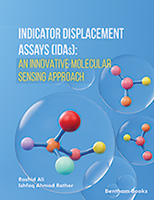This book presents an analysis of those nuclear magnetic resonance (NMR) methods which are used in the studying translational dynamics of molecules in different complex systems including synthetic and natural polymers, tissues, and the porous heterogeneous systems of different destination. The results of proton spin-lattice and spin-spin relaxation, cross-relaxation, pulse field gradient (PFG) NMR in studying diffusion properties and dynamics of molecules in polymer systems of different complexity are reported: from polymer solutions to polymer films and biomaterials of natural origin. The book describes a number of NMR methodologies in studying different heterogeneous materials. In addition to these methods, double-quantum-filtered (DQF) NMR technique in a study of slow molecular dynamics and properties of the systems with the anisotropic properties is presented. DQF NMR is working in investigating the systems, in which there is an order. It is effectively applied in the systems with anisotropic motion of molecules. The examples are presented on natural silk, collagens, and materials of construction destination. It is considered also how DQF NMR spectroscopy highlights water in hardening cement pastes.
The apparent translational diffusion coefficients (Dapp) at two orthogonal directions of applied gradient in oriented fibers of natural polymers/materials were studied and discussed to clarify diffusion and estimate the restricted distance and permeability. The book considered the results of the approaches of one-dimensional and two-dimensional NMR and showed how these methods work in addition to the common methods of single-quantum NMR spectroscopy. The book presents also the data of two-dimensional correlation NMR spectroscopy as the distributions of diffusion coefficients in two orthogonal directions on the systems with anisotropic mobility. Simulations of two-dimensional NMR experiments have been done showing how it leads to the explanation of 2D experimental data on the anisotropy of diffusion coefficients. These 2D NMR methods reveal microscopic local anisotropy by the correlation of the diffusion motion of molecules along either collinear or orthogonal directions of applied pulse gradients of magnetic field.
It is shown that combination of NMR relaxation and diffusion (one- and two-dimensional) techniques is effective experimental methodology which is able to produce valuable information on the dynamic properties and anisotropy in natural silk and collagen fibers with various cross-links, synthetic polymers and porous heterogeneous systems, such as wood and cement.
Both collagen and thread produced by silk worm Bombyx mori are used in nano-scaffolds fabrication for tissue engineering applications. One of the most features of new-created scaffolds with stable chemical cross-linking is a control of the mechanical properties which change the tissue hydration and macromolecular content. Changes in tissue hydration, water-fiber interactions, and macromolecular content can be reflected by NMR. With detailing the hydration properties of collagens at different cross-linking level by NMR, a role of water interactions in improving scaffold characteristics for tissue engineering could be clarified. The book considers how NMR highlights the interaction of these natural fibrous materials with water. Natural silk Bombyx mori is also known as one of the strong natural biomaterials. Bombyx mori silk fibers have two protein-monofilaments embedded in the glue-like sericin coating. The interaction of these natural materials with water leads to a decrease in the length of silk fibers. One chapter of the book shows how natural silk Bombyx mori with low water content has been studied by 1H DQF NMR and single-pulse 1H NMR methods. That investigation demonstrated that DQF NMR enables one to probe the anisotropic motion of water in the silk fibers with residual water content.
Polymers are frequently used as barrier coatings in the technology of many materials to prevent the degradation of porous substrates, for example, such as wood. Mostly, a barrier coating should regulate the transport of water. However, there is the fact that water has a solubility even in hydrophobic polymers. So, the questions of water-polymer interaction are essential in many technological stages of material production and could be answered by NMR studies. The penetration of water into polymer films had always increasing attention in material research. Diffusion of water in different polymer films has been extensively investigated in many research groups. Different NMR methods, in particular, NMR relaxometry and NMR spectroscopy have been used to characterize water molecules in the films during the drying process. These approaches have developed the possibilities of identification of different environments for water upon drying the film or in the films swollen in water. The chapters of this book considered also how the diffusivity and distribution of water in polymer films have been investigated using the NMR relaxation and PFG NMR techniques. The contributions of polymer matrix protons, surface water and bound water could be determined from NMR relaxation functions and 1H NMR spectra. The PFG NMR experiments discovered that the echo-attenuation function depends on the diffusion time indicating that water inside the swollen film is trapped in restricted confinement. The published physical models for diffusion of water in polymeric materials have been probed to fit experimental results. As a result, NMR applications were successful in estimating the sizes of pores inside the polymer films. Thus, the studies described in the book established how magnetization decays and the spin-spin relaxation times of water in saturated polymer films could be applied to provide additional information on the water distribution in the porous microstructure.
Wood is one of the most important natural fiber composites. This material is applied in construction area. For fibrous material, the diffusivities of water could be different along the fiber and in the direction of perpendicular to fiber axis. The book considers how to use one- and two-dimensional PFG NMR spectroscopy to explore the anisotropic diffusion of water in wood. Findings herein suggest that it is possible to directly register diffusion anisotropy by one-dimensional PFG NMR as well as to visualize it in 2D maps of wood. These approaches can potentially be used to diagnose and monitor the treatment of wood that involves macromolecular reorganization and associated changes in cross-relaxation and molecular diffusion of water. The methods are applicable for investigating wetting/drying wood. It can be used also in studying modifications of wood technology affecting the diffusion anisotropy of water in wood cells.
Cement pastes are the examples of heterogeneous porous materials with slow water dynamics. Cement reacts with water to form an amorphous paste through the chemical reaction called hydration. It is plastic and soft when newly mixed, strong and durable when hardened in concrete. The character of the concrete is determined by the quality of the paste. To better understand the role of water in mature concrete, it is necessary to understand a diffusion transport of water in cement pastes cured for different ages: from few hrs to few months. The results of one- and two-dimensional PFG NMR diffusometry studies of water in white cement paste aged from 1 day to 1 year show that the NMR PFG method is primarily sensitive to the capillary porosity. Data is fit on the basis of a log-normal pore size distribution with pore size dependent relaxation times. The volume mean capillary pore size is 4.2 μm in mature paste. No evidence is found of capillary pore anisotropy in cement paste.
Hopefully, the NMR results considered would allow one to get more details in description of diffusion anisotropy and properties of different materials in future.
The book is based on the results of own studies and publications. However, all considered data are discussed and compared with literature data presented in this area and used in the context of total directions of the book to highlight main conclusions of NMR studies in polymers, natural biopolymers, and construction materials.
The text of the book is aimed for researchers. However, the level appropriates to a graduate student in physics, mathematics and/ chemistry. The biologist reader may omit mathematical aspects / equations at first reading and find many useful information on NMR applications in biomaterials. The book will be interest and help to both those need to learn additional NMR applications and those needing to refresh their knowledge and extend their own NMR capabilities. Though the book starts at a useful elementary level on basic NMR it goes deeply into the various NMR applications in studying natural biological and synthetic materials. On the other hand, the author mentions / discusses only very briefly certain special matters in NMR which are outside the scope of this book. Hopefully, the material considered is that many readers will find of interest.
Dr. Victor V. Rodin
Institute of Organic Chemistry
Johannes Kepler University Linz
4040 Linz, Austria
Conflict of Interest
The author declares no competing interest regarding the publication of this book.
ACKNOWLEDGEMENT
Declared none.





